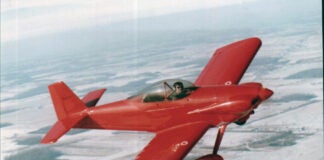Question: I have a question about Experimental/Amateur-Built aircraft and N numbers. What are the rules for size, placement, ornamentation and so on? I often see small N numbers on homebuilts but not as many on certified aircraft. Whats up with that?
Answer: This is actually an easy one. It’s all explained in the FARs. No judgment here.
FAR Part 45 covers identification and registration marking. Unfortunately, this part is either unread or misunderstood by many people. Basically it says that the N numbers must be 12 inches high, with some exceptions, and on either side of the fuselage or vertical tail surface. If the numbers are placed on the fuselage, which most are, they must be between the trailing edge of the wing and the leading edge of the horizontal stabilizer. Placement under the horizontal stabilizer is not acceptable, though we have all seen this approach.
More specifically, FAR 45.21 is the general paragraph that states the numbers must be permanent, have no ornamentation, be contrasting in color with the background and be legible. FAR 45.22 covers exhibition, antique and other aircraft special rules. This is the often overlooked paragraph 45.22(b), which states that an Experimental/Amateur-Built aircraft that has the same external configuration as an aircraft design built at least 30 years ago may display at least 2-inch-high numbers. This is the same paragraph, by the way, that allows us to use an X following the N instead of displaying the Experimental placard called for in 45.23(b).

For most aircraft, N numbers must be 12 inches high and placed on either side of the fuselage or the vertical tail. With some exceptions, Experimental/Amateur-Built aircraft can also use 3-inch-high numbers.
For example, lets say you have an RV-3. Because the design is more than 30 years old, you may display the number as NX168TY and the Experimental placard is not required. The X in the number denotes the Experimental category. This X is not indicated anywhere else except on the aircraft. It is not listed in any paperwork. It simply replaces the Experimental placard.
FAR 45.29 gives the requirements for marking height, width, thickness, spacing and uniformity. This paragraph allows Exhibition, Experimental/Amateur-Built and Experimental/Light Sport Aircraft to use 3-inch numbers, as long as the maximum cruising speed of the aircraft does not exceed 180 knots CAS. If the maximum cruising speed does exceed 180 knots CAS, then were back to the 12-inch requirement. Note also that this is CAS, not true airspeed. This paragraph is one of the most abused of all the FARs. I dare say if you go to any fly-in and walk the line, you will find numerous violations to this rule.
Twelve-inch numbers are also required on all aircraft when operated in an ADIZ or DEWIZ as described in Part 99. In this case the larger numbers may to be temporary.
Many times when a DAR certificates an aircraft, it is not painted. Yet I have to require that the markings are there, and they conform to the rules. That does not mean that when it gets painted, FAR Part 45 does not apply. The rules are still the same. If you chose to ignore Part 45, you are subject to a violation by the FAA. For example, don’t arrive at a fly-in with 3-inch N numbers and start bragging that your airplane cruises at 250 knots, or take the opportunity of the paint-shop visit by hiding the N number under the tail.
Please send your questions for DAR Asberry to editorial@kitplanes.com with Ask the DAR in the subject line.











